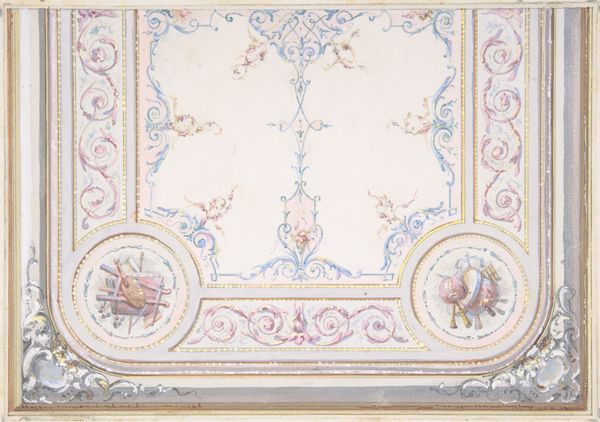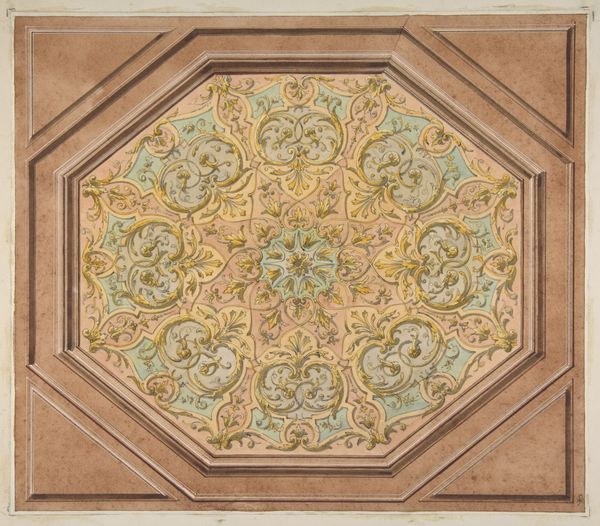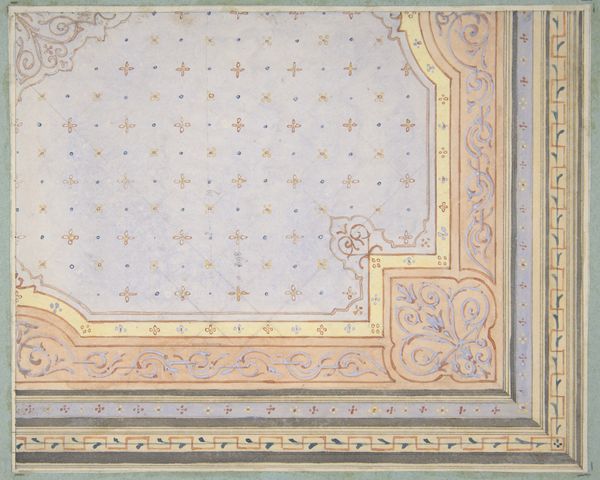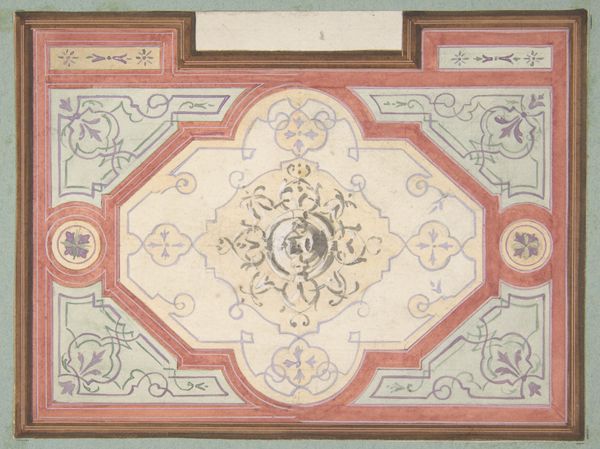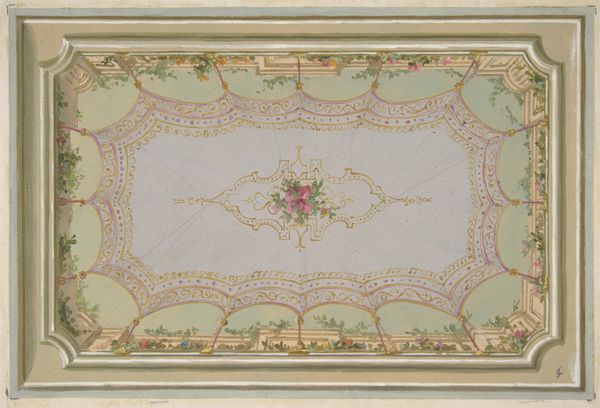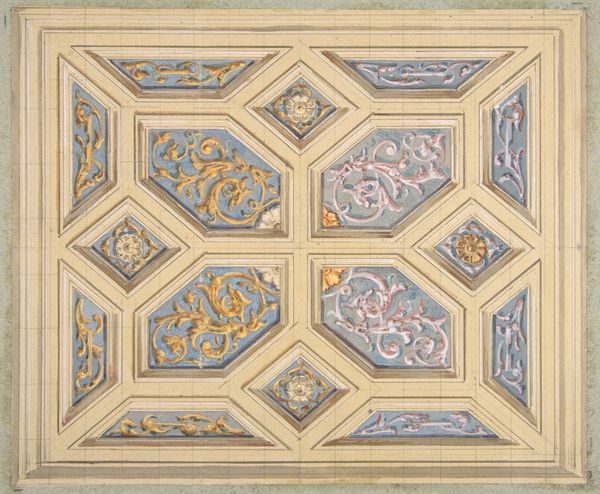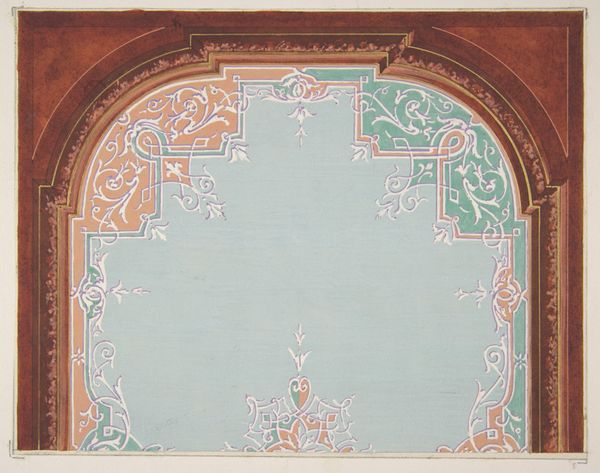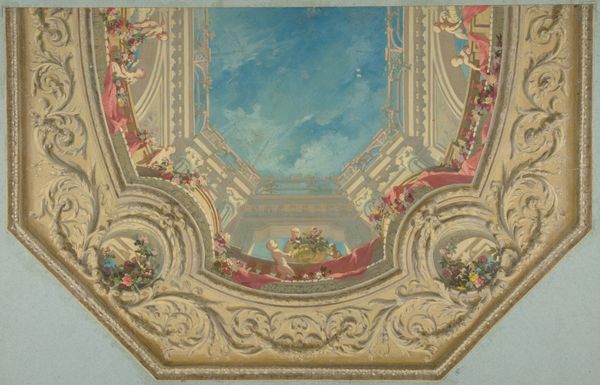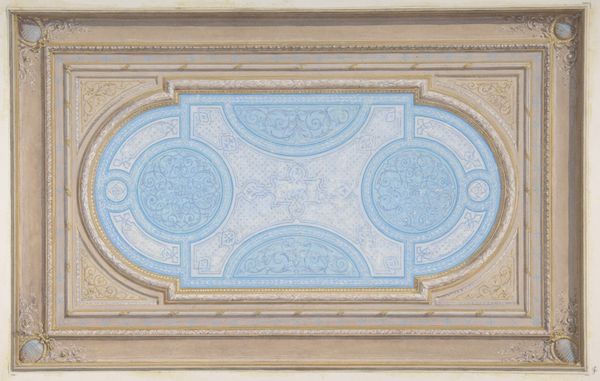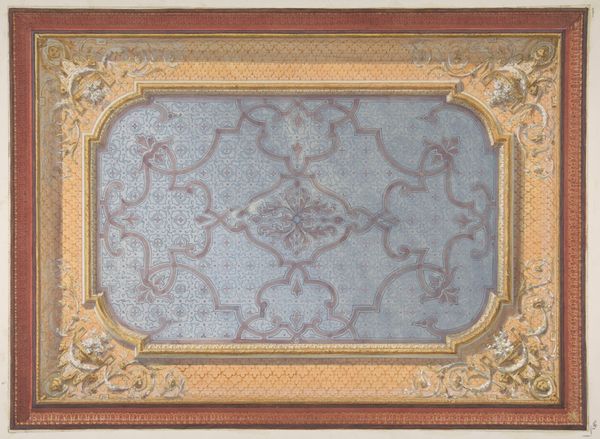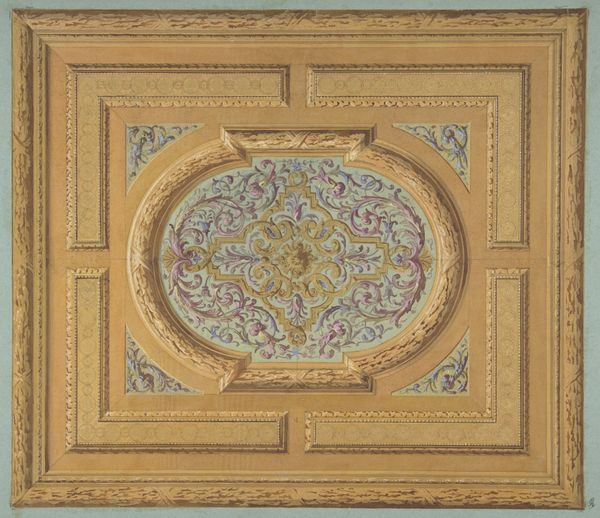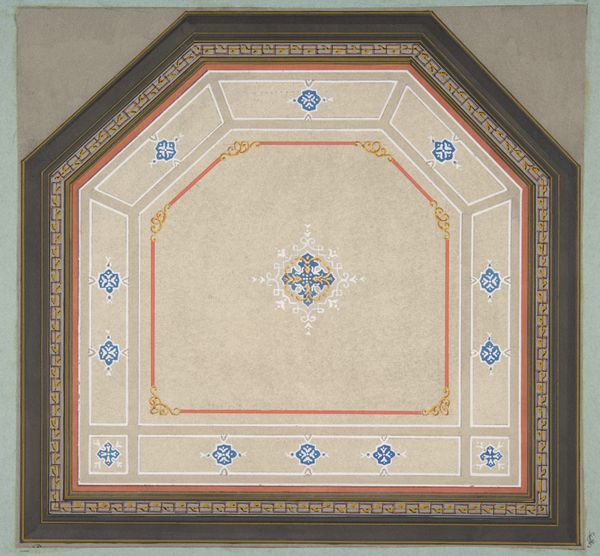
Design for Ceiling of Grand Salon, Hôtel Hope 1867
0:00
0:00
drawing, print, architecture
#
drawing
#
neoclassicism
# print
#
historic architecture
#
geometric pattern
#
traditional architecture
#
repetitive shape and pattern
#
geometric
#
history-painting
#
decorative-art
#
architecture
Dimensions: 9 15/16 x 13 3/16 in. (25.2 x 33.5 cm)
Copyright: Public Domain
Editor: We are looking at "Design for Ceiling of Grand Salon, Hôtel Hope" created in 1867 by Jules-Edmond-Charles Lachaise. It’s a drawing, possibly also a print. It feels so opulent and ornate, almost overwhelming in its detail. What stands out to you? Curator: Immediately, the emphasis on material production comes to mind. This isn't just about aesthetic beauty; it speaks to the immense wealth and labor required to produce such intricate designs. Consider the social context: 1867, a period of vast disparities in wealth. Editor: So, the drawing itself becomes a document of those disparities? Curator: Precisely. The layers of detail—the geometric patterns, the neoclassical motifs—all point to a system that prioritizes extravagance and display. Do you see how the materiality of gold leaf and fine pigments elevates the status, not only of the design, but also the patron? Editor: Yes, the gold seems particularly significant, acting almost as a visual shorthand for wealth and power. Curator: Exactly. And beyond the precious materials, consider the sheer volume of skilled labor needed to execute this design. Artisans dedicated countless hours to meticulously crafting each detail. Can we truly separate this "high art" from the "craft" required for its realization? I think not. Editor: I hadn’t thought about it in terms of the labor involved. So it’s not just about the finished product, but about understanding what went into its making? Curator: Absolutely. This design reveals much more about the society that produced and consumed it, about how hierarchies were materialized through artistry and toil. Editor: This really shifts how I see decorative arts. I’ll definitely consider the production and social implications in future analyses. Thank you! Curator: My pleasure. Examining art through the lens of materiality reveals power dynamics and cultural values often overlooked.
Comments
No comments
Be the first to comment and join the conversation on the ultimate creative platform.
